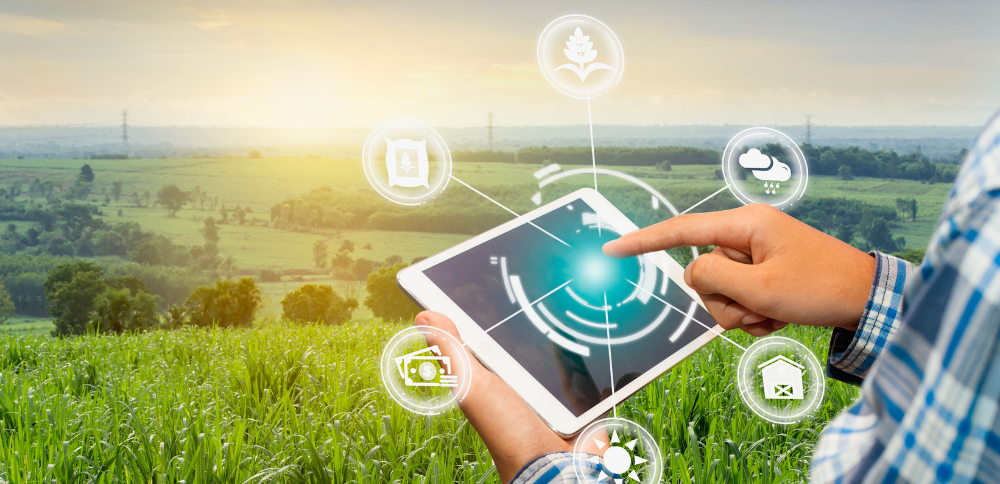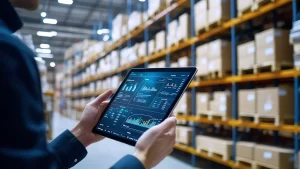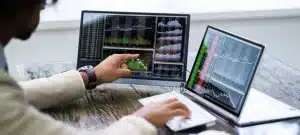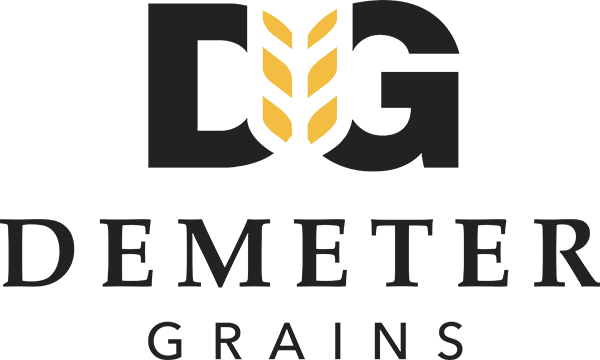With the rise in market volatility coupled with ever-changing regulations, transparency, effective commodity and energy trading systems could flex their muscles better today than ever before. This is where ETRM- Energy Trading and Risk Management, and CTRM-Commodity Trading and Risk Management systems move in. They provide the technical underpinning of trading operations across sectors such as energy, through agriculture, all the way down to metals and chemicals, facilitating trade execution, risk management, and informed decision-making concurrently.
In this comprehensive guide, we delve into the salient differences between ETRM and CTRM, their use, advantages, relevance to the world, selection factors, and the future. Whether you are an energy trader in Europe or an agri-business firm in Southeast Asia, this article will guide you to see how these systems can put you ahead of your competitors.
What is CTRM and ETRM?
CTRM stands for software solutions that aid in commodity trading and risk management, everything from foodstuffs such as wheat and soybeans to metals such as copper and aluminum. The systems manage all phases of the commodity life cycle, such as:
- Trade capture and execution
- Risk assessment and hedging
- Logistics and inventory management
- Settlement and accounting
ETRM, a sub-set of CTRM, is designed to serve specifically energy commodities like electricity, natural gas, crude oil, refined products, and renewables. It encompasses all CTRM functionality with the addition of energy-specific modules like:
- Load forecasting
- Generation scheduling
- Grid balancing
- Emissions and regulatory compliance (e.g., REMIT, EMIR)
The distinction between ETRM CTRM has grown less distinct, with most vendors now providing hybrid platforms supporting both energy and general commodity trading workflows.
Why is ETRM and CTRM software so crucial in 2025?
1. Increasing Market Complexity
In commodity markets, an increase is being witnessed in integration. Price volatility, geopolitical risks, and supply disruption are forcing the establishment of a system that can track exposures and run real-time scenarios.
2. Regulatory Pressures
Automated reporting, audit trails, and near-real-time submission of data are needed by Dodd-Frank (USA), EMIR (Europe), and REMIT (Energy market) global compliance regimes.
3. ESG and Sustainability Integration
ESG transparency is becoming more highly sought. Thus, CTRM ETRM platforms currently incorporate carbon tracking, renewable certification, and ESG scorecards.
4. Digital Transformation
Companies are moving from spreadsheets or legacy systems to cloud-native CTRM and ETRM platforms offering greater scalability, performance, and integration possibilities.
5. Competitive Advantage
With the capabilities of advanced analytics, ML, and predictive algorithms, these platforms facilitate enhanced trading decisions, logistics optimisation, and planning and evaluation.
Key Capabilities of ETRM- and CTRM-Level Systems
ETRM and CTRM systems intend to govern the entire energy and commodity trade lifecycle. Some of the key features making these systems pivotal in any modern trading configuration are as follows:
Trade Management
The most robust component supporting trade management is the heart of any ETRM CTRM system. The systems allow organisations to capture and process physical and financial commodity transactions in real or near real-time. Trade data is entered into the system from contract terms through to pricing formulas applied, and very complicated derivative structures are taken care of. The trade data entered into the system itself-everything is centralised, validated, and made available nearly instantly across departments. This procedure not only guarantees the accuracy with the underlying transaction but also is used for later operations such as risk assessment and accounting.
Risk Management
Any commodity trader really should efficaciously manage risk, and all such risk-related situations could result in significant exposure, price volatility, counterparty default, and operational failure. CTRM ETRM platforms can monitor market, credit, and operational risks in real time. They can calculate Value at Risk, perform stress testing, and simulate future market scenarios.
They facilitate dynamic hedge management and ensure that exposures remain within pre-defined limits, allowing for quicker, better-informed decision-making.
Logistics and Operations
Outside of trading desks, ETRM and CTRM systems control the physical flow of products. They enable companies to schedule and monitor all aspects of logistics, from shipping schedules and storage space allocation to load/unload tracking and demurrage computation. Visibility in real-time into inventory quantity and transportation milestones minimises costs, prevents delivery delays, and synchronises physical operations with financial transactions.
Accounting & Settlements
These solutions automate the financial close of trading business. Post trades and transactions, CTRM and ETRM solutions process invoices automatically, reconciliation, tax applications, and multi-currency settlements. These solutions also connect into corporate accounting environments, posting all financial information into general ledgers automatically, minimising manual input and ensuring accuracy from finance teams.
Analytics & Reporting
New-age CTRM and ETRM systems offer preloaded advanced analytics and reporting capabilities, empowering operational insight and strategic planning. Real-time dashboards watch positions, P&L, exposure, and market movement.
Immediate historical reports, compliance records, and trade overviews are delivered, offering transparent visibility to trading performance. Additional AI-driven forecasting and custom report builders are also available to enable executive-level planning.
Compliance Management
Compliance Management Regulatory compliance is not a subject worthy of negotiation in international trading. These solutions can prepare and submit regulatory reports required under regimes, such as Dodd-Frank, EMIR, MiFID II, and REMIT. They store audit logs exhaustively, ensure immutability of data, and are even engineered to be flexible as rules change. For multinational enterprises, it is key that it is earned by avoiding penalties, meeting reporting deadlines, and presenting confidence to their stakeholders.
Integration Capabilities
CTRM ETRM platforms don’t live in isolation-they’re meant to have flawless integrations into an organisations broader digital world. With open APIs and pre-configured connectors, these platforms connect to ERP software (like SAP or Oracle), transportation management systems (TMS), CRMs, commodity exchanges, weather APIs, and even IoT sensors. With such a networked organization in place, information is permitted to flow from departments or systems on an end-to-end basis, centering the trade platform at the top of knowledge for a business.
Advantages of Implementing CTRM and ETRM Systems
Here are a set of benefits and advantages that the CTRM ETRM system opens up for your business:
Efficiency Gains
The systems replicate the repetitive activity of trade execution, risk calculation, and logistics coordination, reducing manual intervention to a great extent. Automated workflows speed up the deal capture, invoicing, scheduling, and compliance processes, allowing the teams to focus on strategic decisions.
Data Accuracy
Reducing double entry and syncing data between departments in real time is how CTRM/ETRM systems ensure data quality. This ensures that all trades, contracts, and stock movements are recorded with the same, correct information throughout the enterprise.
Real-Time Decision Making
With integrated dashboards, live price feeds, and immediate alerts, traders will be able to react promptly to market moves. This live review of KPIs allows the company to arbitrage, rebalance portfolios, or hedge exposures at the most favorable time.
Increased Risk Visibility
The ability to track market, credit, and operational risks from one platform allows faster response to volatility. Value-at-Risk, stress testing, and scenario modeling help whiten the decision-making process from a risk-adjusted perspective.
Compliance Ready
We take care of your reporting needs for EMIR, Dodd-Frank, REMIT, and beyond with our new CTRM/ETRM platforms that feature built-in templates and automated workflows. Integrated audit trails and stamped evidence help minimise regulatory risks and external audits.
Scalability
As your company scales, its globalised operations, multi-commodity portfolios, mult-currency, and multi-entity workflows are supported by these systems. The modular design allows you to add features as your needs evolve, without requiring time-consuming reengineering.
Who needs CTRM and ETRM Systems?
Different companies need ETRM CTRM Systems for different reasons. Here are some:
Energy Traders (Europe, North America)
ETRM platforms assist with maximizing short-term and long-term energy trading, with load forecasting, balancing, and emissions compliance modules. Increasing renewable portfolios and regulation make real-time control mission-critical.
Agri-businesses (India, Brazil, Australia)
From seasonal logistics to contract farming and price volatility, CTRM platforms allow agri companies to automate end-to-end trade processes. They assist in maximising procurement, storage, quality assurance, and documentation.
Metals and Mining Companies (Africa, LATAM)
Companies dealing in base or precious metals depend on CTRM to handle extraction-weighted volumes, currency exposure, and international transport. Scheduling and risk modules combined enhance operating efficiency and predictability of cash flows.
Shipping and Logistics (Middle East, SEA)
Charters of ships, fuel buying management, coordination of port stops, CTRM systems provide visibility into all legs of logistics-intensive commodity flows. This is vital in oil and grain exports, where timing and cost change quickly.
What to Consider When Selecting a Platform?
While all ETRM CTRM systems offer a host of benefits, you need to find a provider that offers the maximum value for your business. Here are things to consider before picking a solution:
Commodity and Market Coverage
Verify that the platform accommodates all commodities your business deals in, whether energy, agriculture, metals, or renewables. The ability to model both physical and financial products is a requirement for contemporary trading desks.
Cloud Readiness
Search for cloud-native or SaaS solutions with low infrastructure expense, mobile connectivity, speedy onboarding, and integrated disaster recovery. Cloud architecture provides scalability and security with no maintenance overhead.
Modularity and Customisation
Select platforms that allow you to turn on only the modules required, trade, risk, logistics, and accounting, according to your business model. Prevent monolithic systems from imposing excessive complexity or features.
Localisation
Facilitation of local language, currency, tax regulations, and reporting standards is crucial for multinational or global companies. Support for region-specific workflows enables compliance and usage.
Analytics & AI
Next-gen CTRMs provide integrated intelligence for forecasting, price prediction, anomaly detection, and trading recommendations. These capabilities enable risk anticipation and the discovery of new trading opportunities.
Ecosystem Integration
There is smooth integration with ERP, CRM, TMS, and pricing APIs to ensure harmonized operations. Open APIs and pre-configured connectors facilitate quick deployments and real-time data sharing between departments.
Trends Shaping the CTRM and ETRM Space Globally
The world of commodities and technology is not stagnant or linear; it keeps on changing and evolving with time. Here are some trends shaping the system:
Cloud-First Adoption
Cloud-native platforms deliver agility, worldwide reach, and reduced IT overhead, perfect for companies growing aggressively across markets. Vendors are sunsetting on-premise infrastructure for SaaS and microservices-based delivery.
AI & ML Integration
Intelligent alerting, pattern recognition of trade, and predictive analytics are becoming the norm. AI improves decision-making speed and accuracy, particularly in unpredictable markets such as energy and agri-commodities.
Blockchain & IoT
Blockchain provides tamper-proof transaction history and origin traceability, while IoT provides real-time visibility of assets in transit. These technologies are transforming supply chain transparency and regulatory compliance.
Regulatory Tech (RegTech)
Platforms now provide modules that automatically adapt to new rules of compliance, revise filing formats, and allow for timely filings. This offloads the workload from in-house compliance and legal teams.
Sustainability Modules
Carbon accounting, renewable certification tracking, and ESG scoring dashboards are sought after. The modules address stakeholder demands and comply with sustainability-linked financing requests.
Common Implementation Challenges
There can be some roadblocks and challenges that you need to plan for while implementing CTRM or ETRM systems:
Data Migration
Converting from spreadsheets or legacy systems includes data cleansing, mapping, and validation—the latter of which can take too long if not properly supported. Clean data is critical to the successful operation of systems after the go-live.
Change Management
New processes are introduced with new systems. Without proper training and user input, uptake can flag. It is necessary to control stakeholder expectations and offer hands-on onboarding.
Customisation vs. Standardisation
Over-tailoring can slow down projects and make upgrades harder. The correct strategy balances necessary tailoring with fundamental platform capabilities to make sure that scalability and stability in the future are maintained.
Vendor Lock-in
Selecting a system with a closed architecture may inhibit your future flexibility. Open, API-first platforms minimise dependency and enable integration with future tools and services.
The Future of ETRM and CTRM: 2025 and Beyond
With the commodities trading world embracing decentralisation, digitisation, and decarbonisation, the future ETRM CTRM systems will do a lot more than manage trade.
Look forward to witnessing self-service analytics dashboards that are configurable by drag and drop, natural language query capabilities that save time through GenAI, and integrated cross-border tax compliance and automated reporting capabilities. API-based composable architectures will enable firms to compose customised ecosystems from pre-integrated modules. Industry-specific templates, power trading, agri logistics, or carbon markets will reduce implementation timeframes and boost usability of the platform across roles.
Why AgriChain Is Ready for This Future?
AgriChain’s digital agri-supply chain platform already covers important CTRM capabilities like:
- Traceability: Complete visibility of crops from origin through to the purchaser
- Contract Management: Centralised POs, SOs, and transport contracts
- Inventory Oversight: Real-time tracking of warehouse stocks
- Document Management: Automated handling of invoices and shipment records
Growing AgriChain into a comprehensive CTRM solution would be a natural progression, particularly for agri-traders in developing markets.
Conclusion
Whether trading grain in Brazil or power in Germany, the demand for strong, agile, and future-proof trading platforms is undeniable. With ETRM CTRM systems changing at an accelerating pace to address global and regional requirements, the time is now to review your technology stack and future-proof your trading operations.
For agri enterprises, solutions like AgriChain can spearhead the change by bringing commodity-specific requirements along with world-class practices together.
Frequently Asked Questions (FAQs)
How is CTRM different from ETRM?
CTRM deals with all commodities, whereas ETRM is particularly tailored for energy commodities such as oil, gas, and electricity.
Are they cloud-based?
Yes. The majority of newer etrm ctrm systems are SaaS-enabled and cloud-native for scalability and flexibility.
Do SMEs require CTRM/ETRM?
Yes. hey can even make use of enhanced visibility, compliance, and operational effectiveness.
Can a single system handle both energy and agri trade?
Yes. Hybrid platforms or modular systems are provided by most vendors.
How long is the implementation?
Based on complexity, implementation would take anywhere from 3–12 months.












